The Govan Stones – Treasures From The Viking Era In Britain
A. Sutherland - AncientPages.com - An extraordinary and priceless collection of Viking-age monuments, located at Govan Old Parish Church, Glasgow, Scotland, represents one of the best collections of early medieval sculpture anywhere in the British Isles.
Govan stones. Image credit: Deadmanjones - CC BY-SA 3.0
Carved in the 9th – 11th centuries, the Govan Stones probably commemorate the power of those who ruled the native Briton Kingdom of Strathclyde, the lost kingdom of the northern Britons.
The total number of stones was forty-five, but many were lost. They all had a large cross carved on the front, surrounded by Celtic interlace patterns. Interestingly, the missing ones were the same type: the horizontal cross-slab, designed to be placed on top of a grave.
By the end of the nineteenth century, many ancient carvings had worn away after a thousand years of exposure to the elements,
The Govan medieval stones are covered with classic Viking patterns, elaborate carvings of crosses, and cross shafts. Still, they are not found in Scandinavia. Also known as “Hogback monuments”, these house-shaped Viking tombstones (dated to the 10th – 12th century) have been found in northern England and even as far north as the River Tyne.
 A side of the Govan Sarcophagus, with animal and interlace carvings. Image credit: Viking870 - CC BY-SA 4.0
A side of the Govan Sarcophagus, with animal and interlace carvings. Image credit: Viking870 - CC BY-SA 4.0
However, they are considered a remarkable and odd invention associated with the Viking settlers, who built the tombs of the dead in Norwegian style. Did the settlers intend to design the coffins to represent Viking longhouses for the deceased to continue living in the afterlife?
The Govan Sarcophagus with warrior figures is particularly interesting, the only one from solid stone from pre-Norman, northern Britain. It was discovered in the church graveyard in December 1855 and brought into the church in 1908.
The sarcophagus is believed to commemorate St. Constantine, the son of Pictish king Kenneth MacAlpin, King of Dál Riada (841–850), King of the Picts (843–858), and the first King of Alba (843–858).
Side of the Viking-Age Govan Sarcophagus thought to depict a royal saint killed by Vikings in the 870s. Image credit: Viking870 - CC BY-SA 4.0
The coffin is carved from a block of sandstone, with the sides covered with panels depicting animals and a horseman alongside ribbon motifs. Perhaps, it was intended to hold the mortal remains of the founder of the medieval Church of St Constantine, built on the site where Govan Old Parish Church stands today.
There are no religious motifs on the stones depicting warriors and animals. Otherwise, it could suggest that these were gravestones for the local clergy when Govan was a center of royal power in the kingdom of Strathclyde. Still, there is a distinct possibility that the stones commemorated the warrior aristocracy.
The names of the deceased are unknown, for no early inscriptions are visible on any of the Govan stones.
Written by – A. Sutherland - AncientPages.com Senior Staff Writer
Updated on February 26, 2023
Copyright © AncientPages.com All rights reserved. This material may not be published, broadcast, rewritten or redistributed in whole or part without the express written permission of AncientPages.com
Expand for references
More From Ancient Pages
-
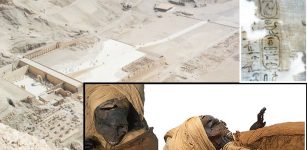 King Seqenenre Taa II Was Killed By Hyksos Invaders – Mummy Scans Reveal His Wounds
Archaeology | Feb 17, 2021
King Seqenenre Taa II Was Killed By Hyksos Invaders – Mummy Scans Reveal His Wounds
Archaeology | Feb 17, 2021 -
 Mysterious Utah: Prehistoric Ancient Petroglyphs Of Santa Clara River Reserve
Civilizations | Oct 2, 2018
Mysterious Utah: Prehistoric Ancient Petroglyphs Of Santa Clara River Reserve
Civilizations | Oct 2, 2018 -
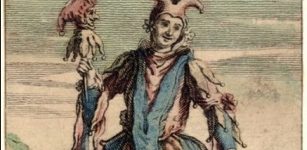 Troublesome Momus: Deity Of Irony, Ridicule, Sarcasm And Harmful Jokes In Greek And Roman Mythology
Featured Stories | Mar 14, 2022
Troublesome Momus: Deity Of Irony, Ridicule, Sarcasm And Harmful Jokes In Greek And Roman Mythology
Featured Stories | Mar 14, 2022 -
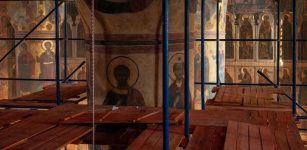 Never-Before-Seen Ancient Frescoes Discovered Inside The Dormition Cathedral
Archaeology | Feb 28, 2020
Never-Before-Seen Ancient Frescoes Discovered Inside The Dormition Cathedral
Archaeology | Feb 28, 2020 -
 Rock-Hewn Ancient Churches Of Lalibela
Civilizations | Aug 22, 2018
Rock-Hewn Ancient Churches Of Lalibela
Civilizations | Aug 22, 2018 -
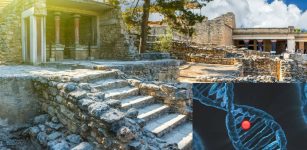 Ancient DNA Sheds New Light On The Fall Of Major Civilizations
Archaeology | Aug 9, 2022
Ancient DNA Sheds New Light On The Fall Of Major Civilizations
Archaeology | Aug 9, 2022 -
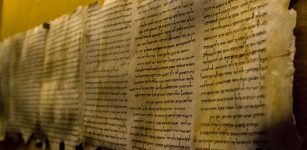 30 Ancient Skeletons May Finally Unravel The Secrets Of The Dead Sea Scrolls
Archaeology | Nov 23, 2017
30 Ancient Skeletons May Finally Unravel The Secrets Of The Dead Sea Scrolls
Archaeology | Nov 23, 2017 -
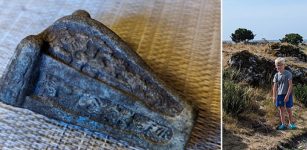 8-Year-Old Boy Finds Unusual Viking Age Artifact On Gotland Island, Sweden
Archaeology | Sep 18, 2023
8-Year-Old Boy Finds Unusual Viking Age Artifact On Gotland Island, Sweden
Archaeology | Sep 18, 2023 -
 Anne Askew: Woman Of Great Courage, Strong Beliefs And Principles Who Was Arrested For Heresy, Imprisoned, Tortured And Burnt At The Stake
Featured Stories | Feb 15, 2019
Anne Askew: Woman Of Great Courage, Strong Beliefs And Principles Who Was Arrested For Heresy, Imprisoned, Tortured And Burnt At The Stake
Featured Stories | Feb 15, 2019 -
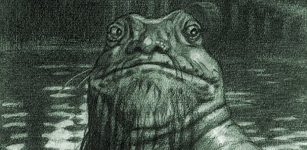 Vodyanoi: Evil Water Spirit In Ancient Beliefs Of The Slavs
Featured Stories | May 23, 2019
Vodyanoi: Evil Water Spirit In Ancient Beliefs Of The Slavs
Featured Stories | May 23, 2019 -
 On This Day In History: HMS Challenger Begins Scientific Exploration Of Oceans – On Dec 21, 1872
News | Dec 21, 2016
On This Day In History: HMS Challenger Begins Scientific Exploration Of Oceans – On Dec 21, 1872
News | Dec 21, 2016 -
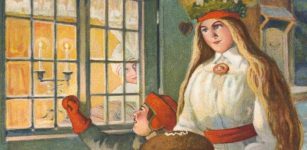 Why We Celebrate Saint Lucy’s Day – The Bringer Of Light And Patron Of The Blind
Ancient Traditions And Customs | Dec 13, 2021
Why We Celebrate Saint Lucy’s Day – The Bringer Of Light And Patron Of The Blind
Ancient Traditions And Customs | Dec 13, 2021 -
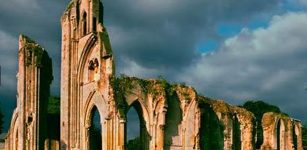 Medieval Mythbusting – New Research Rewrites History Of Glastonbury Abbey
Archaeology | Nov 23, 2015
Medieval Mythbusting – New Research Rewrites History Of Glastonbury Abbey
Archaeology | Nov 23, 2015 -
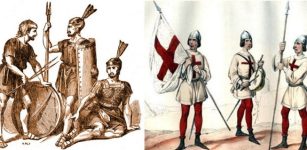 Police Forces That Kept Order In Ancient Streets
Ancient History Facts | Jun 12, 2018
Police Forces That Kept Order In Ancient Streets
Ancient History Facts | Jun 12, 2018 -
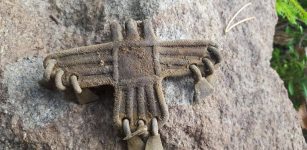 Unique Ancient Three-Headed Eagle Pendant Discovered In Finland: A Symbol Of Three Different Human Souls
Ancient Symbols | May 6, 2016
Unique Ancient Three-Headed Eagle Pendant Discovered In Finland: A Symbol Of Three Different Human Souls
Ancient Symbols | May 6, 2016 -
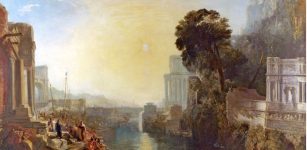 Evidence Of Carthaginian Presence In Northern Europe?
Featured Stories | Jun 18, 2022
Evidence Of Carthaginian Presence In Northern Europe?
Featured Stories | Jun 18, 2022 -
 Unusual Ancient Winged Half-Human And Half-Animal Divine Creature With Supernatural Powers
Artifacts | Jul 30, 2019
Unusual Ancient Winged Half-Human And Half-Animal Divine Creature With Supernatural Powers
Artifacts | Jul 30, 2019 -
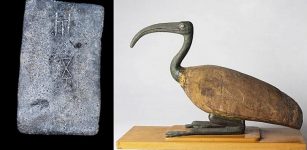 Has The Mystery Of Bronze Age Tin Been Solved?
Archaeology | Oct 3, 2019
Has The Mystery Of Bronze Age Tin Been Solved?
Archaeology | Oct 3, 2019 -
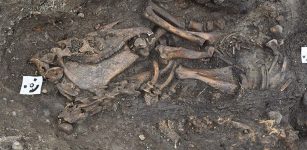 Two Rare Full-Sized Viking Burial Ships Uncovered In Sweden
Archaeology | Jul 5, 2019
Two Rare Full-Sized Viking Burial Ships Uncovered In Sweden
Archaeology | Jul 5, 2019 -
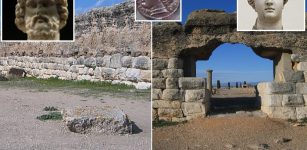 Ancient City Empuries (Emporiae) With Best Greek Ruins Located Outside Of Greece
Featured Stories | Dec 29, 2022
Ancient City Empuries (Emporiae) With Best Greek Ruins Located Outside Of Greece
Featured Stories | Dec 29, 2022


